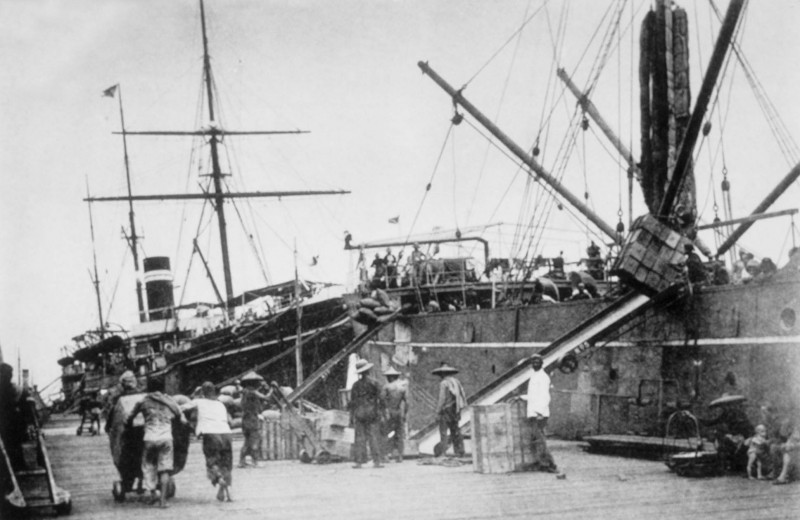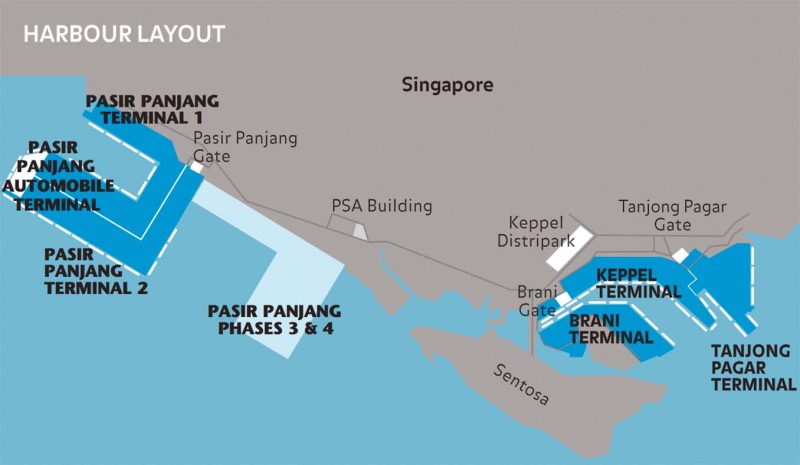The Port of Singapore is huge and is the second busiest port in the world in terms of total shipping tonnage. It also tranships a fifth of the world’s shipping containers and one half of the world’s supply of crude oil making it the busiest transhipment port in the world. It was only surpassed in 2005 by Shanghai as the busiest port in the world with the extensive anchorages holding hundreds of ships at any one time. Some 32.2 TEU of containers were handled in 2013 at 57 berths at six large container terminals. Singapore lacks both land and natural resources, with water imported from Malaysia, and the income from the port has been essential for the last fifty years since Singapore became independent in 1965.
History Of Singapore
Singapore lies 85 miles north of the equator and has a hot, humid climate with a constant daily temperature of 25 to 28 degrees Centigrade, and rainfall averages 96 inches per year. Tropical vegetation flourished, but was then cut down for rubber and coconut plantations. Singapore settlement became the only port in the southern part of the Malacca Strait at the end of the thirteenth century. Singapore or Singapura (which means ‘lion city’ in Sanskrit) was founded as part of the Sumatran trading empire of Srivijaya. Chinese traders in the early seventeenth century exported rosewood, Chinese blue and white porcelain, and local produce in traditional junks. However, it was the arrival of Sir Stamford Raffles (1781-1826) on 28th January 1819, and his evaluation of the deep and sheltered waters of Keppel Harbour as a potentially important port for the East India Company, that Singapore became a place of some significance. The population of the island was only one thousand in 1819 at the time of the arrival of Sir Stamford Raffles, and he leased the island from the Sultan of Johore. The British Government took over full sovereignty in 1824 and began to clear the forests and build a city and port. The Raffles Hotel was first opened in 1887 and enlarged in 1899 to the present building near Fort Canning Park.
The first port flourished at the mouth of the Singapore river for forty years after 1819. A hydrographic survey of the river was made and a lighthouse was erected at the eastern approaches to Singapore Strait in 1851 by James Horsburgh, Hydrographer of the East India Company. A submarine telegraph cable was laid in 1871 to link Madras to Singapore, and was extended a year later to Australia and Hong Kong. The early port facilities in Keppel Harbour to the west were much enhanced. The entire wharf frontage, built originally of wood, was demolished and replaced with concrete structures. Facilities for bonded storage, cold storage, vegetable oil storage and latex storage were built. The early port railway system linked into the Federal Malay States Railways. A steam floating crane, steam salvage tug, steam floating coal plant, steam fire float and a fleet of steam harbour tugs, lighters and steel barges were built as essential items of the growing port.


Subscribe today to read the full article!
Simply click below to subscribe and not only read the full article instantly, but gain unparalleled access to the specialist magazine for shipping enthusiasts.






Comments
Sorry, comments are closed for this item